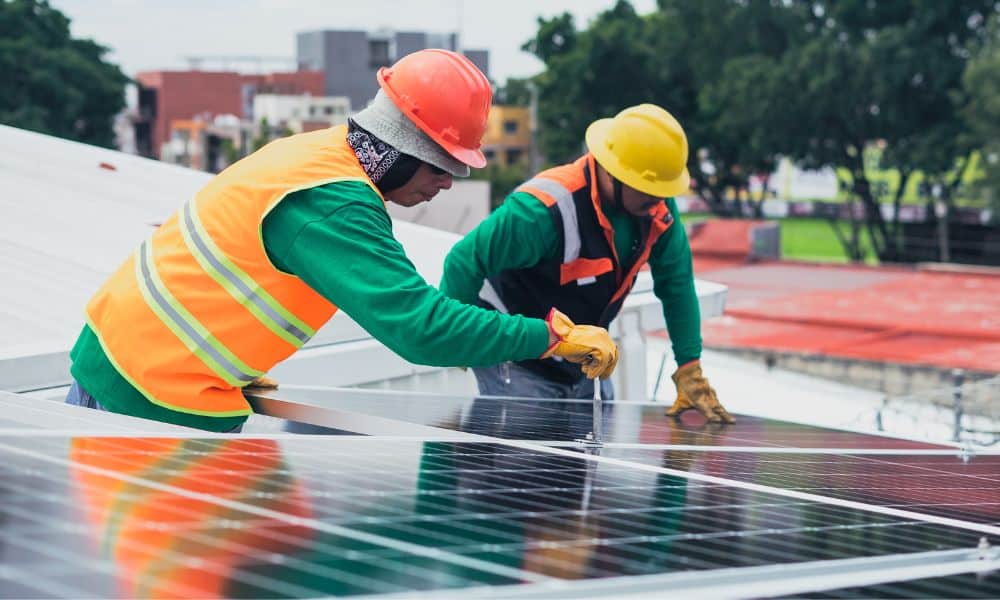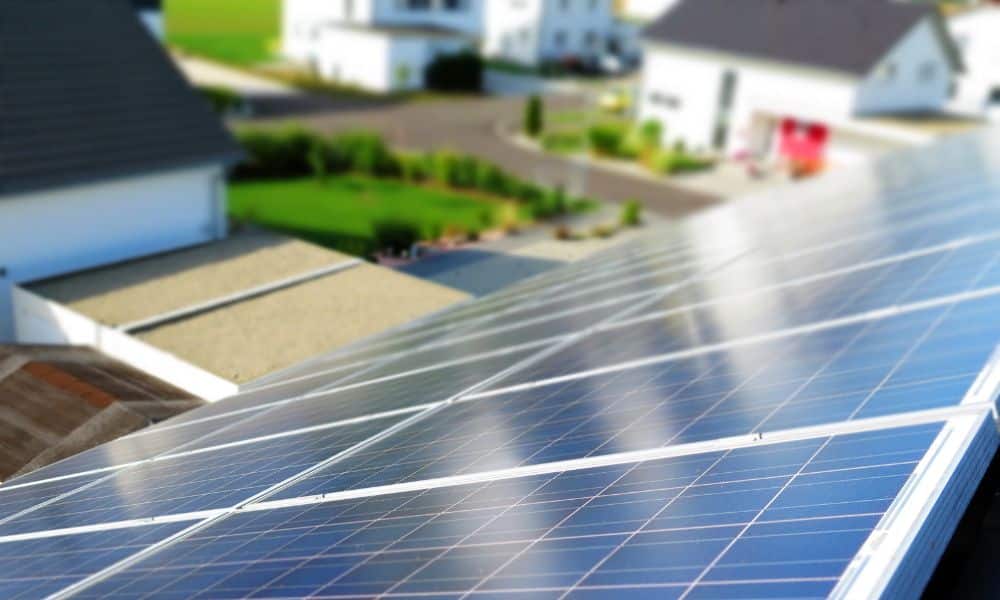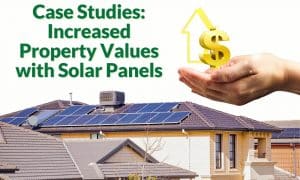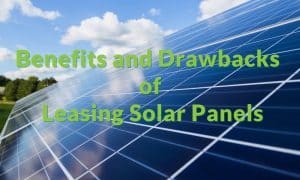In 2022, the solar industry experienced a seismic shift with the rise of cost-effective TOPCon (Tunnel Oxide Passivated Contact) cell technology, primarily driven by the superior conversion efficiency of N-type solar panels. This development has attracted numerous participants in the solar industry, posing a potential challenge to the dominance of PERC cell technology (for producing P-type cells).
Discover the power of solar with Energy Matters! They offer free solar quotes to connect Australians with the most efficient and cost-effective TOPCon cell technology, ensuring you find the perfect solar solution for your location.
Are you looking to save money on your electricity bills and reduce your carbon footprint? Solar energy is the perfect solution! Energy Matters can help you get up to 3 FREE quotes from pre-qualified and vetted solar firms in your area.
Energy Matters has been a leader in the renewable energy industry since 2005 and has helped over 40,000 Australian households in their journey to energy independence. With Energy Matters, you can be sure you’re getting the best possible deal on solar energy. We only work with reputable solar firms with a proven track record of delivering high-quality solar systems.
TrendForce says that while PERC technology remains a market mainstay for P-type cells, the gradual realisation of large-scale N-type cell capacities threatens to phase out a significant portion of PERC cell technology within the next few years. Additionally, adopting N-type cells could lead to sporadic shortages of high-quality silicon materials and wafers tailored for N-type cells. This creates a noticeable price disparity between N-type and P-type counterparts.
Silicon supply and price disparity
As we approach the end of 2023, the total production capacity of polysilicon is expected to increase by a staggering 68.6% year-on-year, reaching 2.072 million tons. Use this time to be more sustainable, start by getting your FREE solar quotes at Energy Matters.
According to the analysis of TrendForce, a well-known analysis firm with its headquarters in Taiwan, the actual output of silicon materials is predicted to be around 1.483 million tons, enough to support over 600 GW of solar panel consumption, considering a silicon consumption rate of 0.245 tons/GW. This suggests an oversupply of silicon relative to the annual installation demand of approximately 370-390 GW.

Consequently, P-type silicon could face oversupply issues, resulting in a faster drop in its price.
In contrast, the strong demand and limited output for N-type silicon may lead to periodic shortages, helping stabilise its price. This shift towards N-type silicon promises better profitability for silicon firms.
Silicon supply remains abundant, but the price gap between P-type and N-type continues to widen
Despite the increasing demand for N-type cell slices, silicon supply remains abundant. However, the price gap between P-type and N-type silicon is widening, as N-type silicon offers better profitability for silicon firms.
This price gap will likely continue soon, as N-type cell capacity deployment is facing delays.
As a result, PERC technology is expected to remain dominant this year, although the penetration rate of TOPCon cells will accelerate.
China is expected to hold 80–85% of global solar panel capacity in 2023
Estimations for 2023 indicate that global solar panel capacity could reach an impressive 1,034 GW, representing a 64.7% year-on-year increase. Chinese enterprises are the driving force behind this growth, with approximately 335.4 GW of newly added capacity. As Western countries and India introduce policies supporting local manufacturing, Chinese firms are considering establishing production capacities overseas to navigate trade barriers successfully.
Leading Chinese solar panel manufacturers like Longi, JinkoSolar, JA Solar, and TrinaSolar have expanded their operations to regions including the US, Europe, and the Middle East. With matured technology and cost-effective production, this expansion presents a significant challenge for enterprises from other regions attempting to compete.
Consequently, China is expected to maintain its dominant position in the global competitive landscape for solar panels, with an anticipated 80-85% capacity share in 2023.
Source: TrendForce Press Center September 2023
Are you tired of being the last to know about renewable energy updates? Did you miss out on a state rebate or incentive? Looking to find out more about how you can save on your utility bills? Subscribe to Energy Matters’ weekly newsletter and keep updated with Australian and international news, incentives, and offers.
Understanding P-type and N-type solar cells
P-type vs N-type solar
P-type and N-type solar panels are made of crystalline silicon but differ in how the silicon is doped. Doping is a process that adds impurities to the silicon to create either a positive or negative charge. P-type solar panels are doped with boron, which creates a positive charge, while N-type solar panels are doped with phosphorus, which creates a negative charge.
Characteristic | P-type | N-type |
Efficiency | Up to 23.6% | Up to 25.7% |
Light-induced degradation | Yes | No |
Temperature coefficient | Higher | Lower |
Cost | Lower | Higher |
Efficiency
N-type solar panels are generally more efficient than P-type solar panels. This is because N-type solar panels are less susceptible to light-induced degradation (LID), which can reduce the efficiency of P-type solar panels by up to 10% over time. N-type solar panels have a lower temperature coefficient, meaning they perform better in hot climates.
Longevity
N-type solar panels are also expected to have a longer lifespan than P-type solar panels. This is because N-type solar panels are less susceptible to boron-oxygen light-induced degradation (BOLID), which can cause P-type solar panels to degrade more quickly over time.
Cost
N-type solar panels are currently more expensive than P-type solar panels. This is because N-type solar panel technology is still relatively new and production costs are higher. However, as N-type solar panel technology becomes more widespread, the cost of N-type solar panels is expected to decrease.
Overall, N-type solar panels offer several advantages over P-type solar panels, including higher efficiency, longer lifespan, and better performance in hot climates. However, N-type solar panels are currently more expensive. N-type solar panels are a good option for homeowners and businesses looking for the most efficient and long-lasting solar panels. P-type solar panels may be a more affordable choice for those on a budget.
Read more about solar panels
- Types of Solar PV Technology: A Comprehensive Guide
- The Best Portable Solar Panels of 2023: A Comprehensive
- Solar Photovoltaic (PV) System: All You Need To Know
- Solar Panel Sizes, Dimensions And Wattage
- Why You Shouldn’t Wait for Cheaper Solar Panels in 2023
- How to Make Your Solar Panels Last Longer in Australia
Implications for the solar industry
- The transition to N-type cells could lead to increased solar panel efficiency.
- This may result in higher energy yields and shorter payback periods for solar installations.
- Solar technology will become more reliable, particularly in extreme weather conditions.
Which type of solar panel is right for you?

The best type of solar panel for you depends on your needs and budget. N-type solar panels are a good option if you are looking for the most efficient and long-lasting solar panels. However, if you are on a budget, P-type solar panels may be more affordable.
It is also important to consider the climate in which you live. If you live in a hot climate, N-type solar panels may be a better choice because they perform better in high temperatures.
Ultimately, the best way to decide which type of solar panel is right for you is to consult a solar installer. They can help you assess your needs and budget and recommend the best type of solar panel for your home or business.
Why choose Energy Matters?
- We’ve been in the solar industry since 2005 and have helped over 40,000 Australian households in their journey to energy independence.
- We’ve pre-qualified and vetted our installers for their track record of delivering Australia’s best business and household solar systems.
- We’ll match you with installers who are local to you, so you can get a quote that’s tailored to your needs.
Benefits of going solar with Energy Matters:

Get up to 3 FREE quotes
We’ll connect you with 3 different solar installers so you can compare prices and services.

Work with trusted installers
We only work with solar installers who have been pre-qualified and vetted for their track record of delivering quality solar systems.

Get peace of mind
We’ll support you every step of the way, from the initial consultation to the final installation. Our team will assist you with the information you need to go solar!
So what are you waiting for? Energy Matters can help! We have a trusted network of local, pre-qualified and vetted installers ready to provide competitive quotes and answer your questions. Get up to 3 FREE, no-obligation quotes by completing our quick quiz.













































